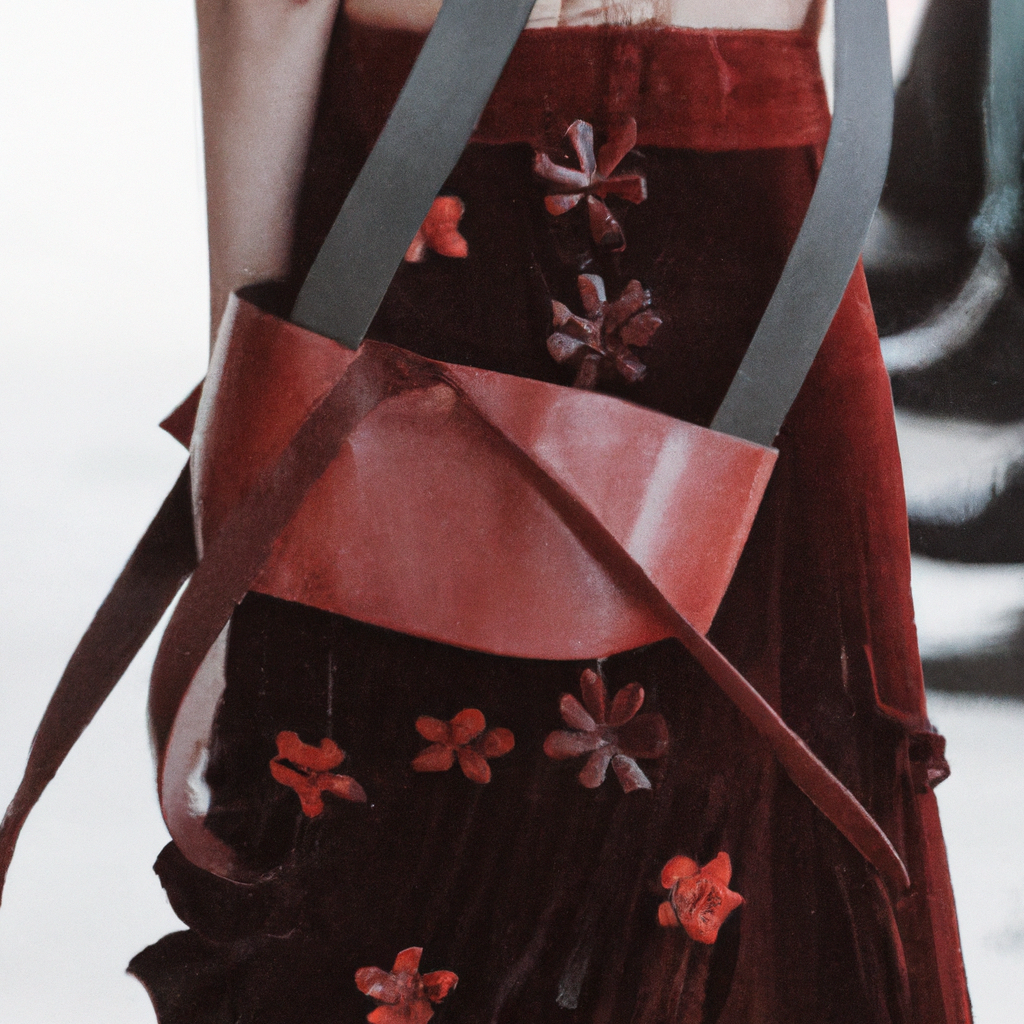As trends shift and new fashion lines come and go, the concept of sustainability in the fashion world is becoming increasingly popular. Eco-consciousness, an idea that considers the planet and its resources when creating fashion, has become a much needed call to action for the industry. Sustainable fashion, turning natural and human-made resources into fashionable, high-quality clothes and accessories, could be the answer to a more sustainable future.
1. “From Runway to Recycling Bin: The Emergence of Sustainable Fashion”
Sustainable fashion is taking the style world by storm. Throughout the years, fashion has been an integral part of popular culture, with many creators using it to make a statement and express themselves. Now, the fashion world is embracing sustainability and creating garments that are stylish, durable, and environmentally friendly.
Today, consumers are more conscious of their buying habits than ever before. They now look for clothes made with natural fibers, organic materials, and organic dyes; they are also concerned about where their clothes come from and how they are made. This movement has led to the emergence of sustainable fashion brands that focus on creating stylish clothing that is kind to the planet.
It is now possible to get a fashionable, conscious wardrobe without breaking the bank. Brands like Stella McCartney and Everlane have revolutionized fashion by creating high-quality clothes that fit into an ethical lifestyle. These companies use innovative fabrics, natural dyes, and eco-friendly production methods to create sustainable clothing that looks great and lasts longer than conventional garments.
Sustainable fashion also emphasizes the use and repurposing of materials. Brands are now taking old clothing and reworking them into unique garments with new designs and silhouettes. This eliminates the need to produce new fabric from scratch, reducing the environmental impact of fashion production.
In addition, the fashion industry is embracing recycling and other initiatives to reduce the amount of waste generated by the fashion industry. For example, many companies are now using recycled synthetic fibers to create clothes with a lower environmental impact. This is great news for consumers, as it means that they can look stylish and show off their ethical values without compromising on quality.
- Clothes made with organic materials
- Reusing and repurposing materials
- Using recycled synthetic fibers
Sustainable fashion has come a long way in recent years, and more brands are joining the movement every day. Thanks to the efforts of these sustainable fashion designers, it’s now possible to be stylish and conscious at the same time.
2. “Designing a Greener Future: How the Fashion Industry is Embracing Eco-consciousness”
As the fashion industry shifts to an environmentally friendly state of mind, brands leading the way are encouraging eco-consciousness in green design. Sustainable fabrics, eco-friendly dyes, and responsible sourcing strategies are just some of the approaches the industry is taking as part of its mission to design a greener future.
Sustainable Fabrics
Organic cotton, jute, hemp, and lyocell are all sustainable fabrics being more widely used. These fabrics are grown without the use of pesticides and insecticide, helping to protect the environment and those who farm it. They also use less water than conventional fabrics, and can be recycled back into the system.
Eco-Friendly Dyes
The fashion industry has been striving for an eco-friendly followed by switching to non-allergenic, eco-friendly dyes that don’t produce toxic wastewater. These dyes promote sustainability rather than just meet a basic aesthetic requirement.
Responsible Sourcing
Brands are now investing in responsible sourcing strategies for their materials. This means limiting materials to plants sourced from local and environmentally-friendly farms or minimizing the need for energy-intensive transportation.
- The fashion industry is increasingly relying on sustainable fabrics like organic cotton and jute.
- Non-allergenic, eco-friendly dyes that don’t produce toxic wastewater are being used.
- Responsible sourcing strategies are being implemented to use materials sourced from plants that limit energy-intensive transportation.
By making eco-conscious decisions, the fashion industry is taking on the challenge to design a greener future. These sustainable fabrics, eco-friendly dyes, and responsible sourcing strategies provide a positive outlook for the industry and help to reduce the amount of waste produced.
3. “Fashion Forward: Revolutionizing the Industry with Sustainable and Ethical Practices”
Sustainability and ethical practices are revolutionizing the fashion industry. Sustainable fashion has a two-fold purpose: to reduce the environmental effects of the fashion industry and to create clothing that is designed, produced, and manufactured in an effort to level the playing ground between human beings and our planet. Here are some key points that are influencing fashion forward:
- Minimizing Impacts on the Environment: Sustainability in fashion is all about creating a smaller environmental footprint. This includes using organic, natural, and sustainable materials to reduce water, energy and chemical use throughout the supply chain. It also involves using recyclable and biodegradable materials, as well as using renewable energy sources, such as solar and wind power.
- Responsible Production and Manufacturing: In order to create clothing that is socially responsible, fashion brands must ensure that labor laws and public safety regulations are being followed, as well as having workers who are paid livable wages. These practices do not only benefit the workers but the environment as well. A sustainable fashion brand must have a clear, concise code of conduct when it comes to production and manufacturing.
- Fair-Trade Practices: When purchasing materials for their designs, fashion brands must abide by fair-trade practices to ensure that they are paying a living wage to the artisans and manufacturers. This helps to ensure that those who are creating and producing the clothing are being treated fairly and ethically. It also helps to promote global economic stability and economic growth.
- Recycled Materials: Fashion brands are beginning to use more recycled materials in their designs. From plastics to fabrics, fashion brands are finding new and innovative ways to reduce their environmental impacts by using upcycled materials in their garments. This helps to keep waste out of landfills and reduces the amount of energy that is needed to produce new materials.
With sustainable and ethical practices being adopted into the fashion industry, companies are able to create designs that are better for both people and the planet. Consumers are becoming increasingly aware of the need for sustainable fashion, and more clothing companies are taking steps to reduce their environmental footprints. By utilizing sustainable and ethical practices, fashion brands are revolutionizing the industry one design at a time.
4. “The Stylish Shift: Exploring the Rise of Sustainable Fashion and Its Impact on Our Planet
The rise of sustainable fashion, or eco-fashion, has been nothing short of remarkable in recent years. More people are embracing the idea that eco-responsible fashion doesn’t mean sacrificing style and luxury. It’s a mindset shift in how we view clothing, and it’s drastically changing the fashion industry.
- A Change in Mindset: People used to think that eco-fashion meant sacrificing the fashion designs that are most desirable, but the development of sustainable fabrics are changing that. Fabrics like organic cotton, jute, tencel and hemp are being woven into the latest fashion trends, from sportswear to elegant formal attire. This shift in mindset has allowed people to express their style in a way that is more ethical and sustainable.
- Closing the Gap: The rise of sustainable fashion is helping close the gap between fast fashion and luxury fashion. It has allowed people to purchase quality items at affordable prices so that they can feel good about what they wear and how they are contributing to ethical fashion.
- Making a Difference: Eco-fashion has the potential to drastically reduce the amount of waste associated with the fashion industry, such as water use and carbon emissions. By using sustainable materials and ethical practices, the fashion industry can be a positive force in protecting the environment.
- The Future of Fashion: As more people become aware of the positive impact of sustainable fashion, the demand for eco-friendly products will continue to rise. With new technologies and processes, trends in sustainable fashion are sure to keep developing and evolving.
The stylish shift towards sustainable fashion has been a welcome change to the fashion industry. The latest eco-friendly designs are fashionable, affordable and eco-responsible, helping to reduce the environmental impact of the fashion industry while also providing stylish options for customers. As awareness of sustainable fashion continues to grow, it’s clear that it’s here to stay.
Sustainable fashion opens the door to a world of ethically aware style that looks good, feels good, and does good for the environment. We have taken the first steps on a long road towards building a more sustainable fashion future. Let’s keep embracing eco-consciousness and advocating for its relevance in the fashion industry.


